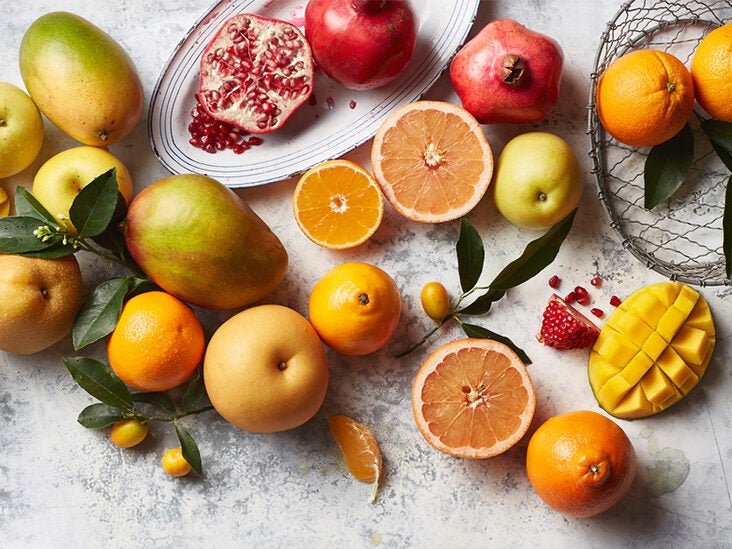Winter fruits are equally as plentiful and nutrient-dense as summer ones. The diversity of flavors, hues, and nutrients reflects Mother Nature’s vow to look after your health during the most challenging months of the year. Fildena 200 and Cenforce 200 are both beneficial to your health.
Furthermore, this is not the final chapter! The cold weather creates throbbing pains in the bones and joints. It may be tough to focus on a weight loss strategy in such a setting.
Winter is a great time to focus on your nutrition and fitness program. As the temperature decreases, you will eat more and use less energy working out. Sildalist might assist you in living a long and happy life.
1. Mangoes with oranges
When I looked at the contents of these fruits, I was surprised to see that they have a very low glycemic index. Despite having somewhat more sugar than other fruits, a full navel orange has a glycemic index of just 5. 1 When I hear the term citrus, the first thing that springs to mind is, of course, tonnes of vitamin C.
This is a high-vitamin C source that has been proven several times to be a natural fat-burning source. Because vitamin C helps the body’s metabolism, oranges are the ideal fruit for weight reduction. They are high in water content and will satisfy your intermittent thirst.
2. Kiwi
The kiwifruit, commonly known as Chinese gooseberries, is an extremely potent small fruit. One fruit has a glycemic load of 4 and includes 11% of your daily fiber, 50% of your vitamin K, and 141% of your vitamin C. Male and female blooms develop on different plants because kiwi vines are dioecious. In most cases, one male plant can pollinate three to eight female plants.
The ellipsoidal kiwi fruit has hairy brownish-green skin and is a real berry. The flesh is transparent green and solid, with several tasty purple-black seeds buried around a white core. The deciduous leaves grow alternately on tall petioles (leaf stems), with reddish hairs on the juvenile leaves.
3. Dates
Dates are frequently referred to as “nature’s candy.” Date paste goes well with baked products. As a result, having them on hand is advantageous. Dates contain a lot of sugar. One of these little fruits has a glycemic index of 9, so don’t overdo it.
They are also vitamin and mineral poor. However, as previously noted, they are comparable to candy but without processed sugar, so if you’re attempting to stop the sugar habit, they can assist with cravings.
4. persimmon
Persimmons are berries, although enormous ones. There are several variations, but the nutrients are the same regardless of which one you sample. They, like other fruits, are rich in vitamin C. Their orange coloring suggests a high level of vitamin A, which is beneficial to the eyes. They are also high in vitamins and minerals like K, B6, and Folic acid.
The Persimmon palm, also known as Phoenix dactyliferous, is a flowering plant species in the Arecaceae palm family farmed for its delicious sweet fruit known as dates. The plant is commonly grown in northern Africa, the Middle East, and South Asia, and it has been naturalized in a variety of tropical and subtropical climates across the world. The type species of the genus Phoenix, which encompasses 12-19 species of wild date palms, is Dactyliferous.
5. Pomegranate
This well-known superfruit has a high antioxidant content. What you might not know is that the seeds are heavy in omega-6 fatty acids. Because the body cannot generate omega oils, they must be received through diet. Omega-6 fatty acids have an important role in brain development and function. The glycemic load of pomegranate is 5 per half-cup serving.
The lovely axillary orange-red blooms appear towards the terminals of the branchlets. The calyx is tubular and persistent, with five to seven lobes; the petals are lance-shaped and situated between the calyx lobes. The ovary is housed in the calyx tube, which is separated into two series, one above the other.
6. Grapes
Grapes, both red and green, are abundant in vitamins and minerals such as vitamin C, vitamin K, copper, and potassium. One cup of grapes has a glycemic index of 9 and offers roughly 5% of your daily fiber needs.
Mutations in two white grape regulatory genes inhibit anthocyanin synthesis, which is responsible for the purple color of the grape. The varied tints of purple in red wines are caused by anthocyanins and other pigment compounds of the wider family of polyphenols present in purple grapes. Grapes have an ellipsoid form, similar to a prolate spheroid.
7. Pear
Did you know that eating a pear every day can cut your stroke risk by 52%? That is incredibly important! The inside fruit is vital, but the pear’s skin is the actual star of this fruit. It includes nearly half of the fiber content, as well as a variety of anti-inflammatory and anti-cancer enzymes.
Pears are available in a variety of forms. One medium-sized pear provides around 22% fiber when eaten uncooked. It has around 6 grams of sugar in it. Pear wood was selected to carve the blocks for woodcuts since it is a popular material for high-quality woodwind instruments and furnishings. It is also employed in the production of fragrant smoke for the smoking of meat or tobacco.
